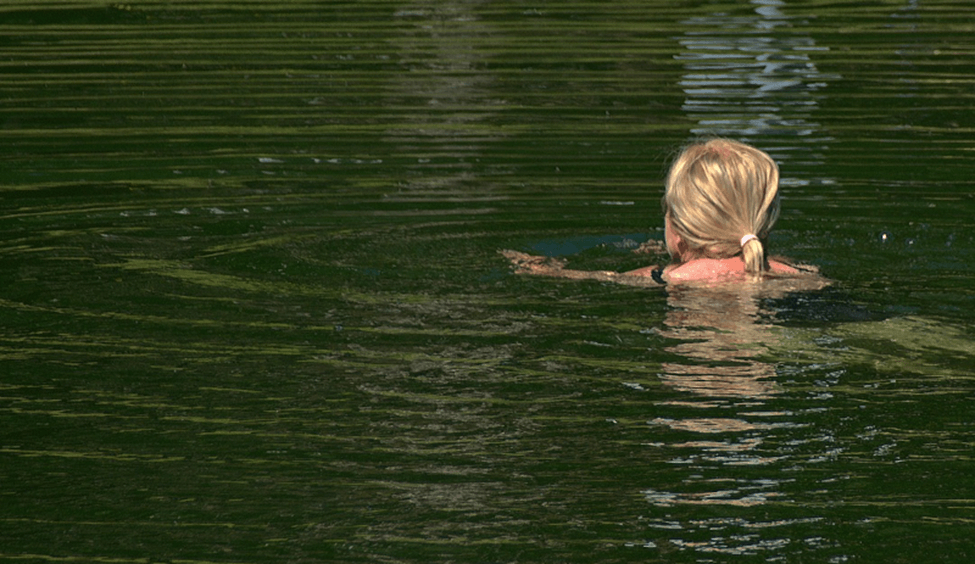
Natural and Eco-Friendly Pools
Inground swimming pools are a great addition for exercise, relaxation, day and evening parties and increasing your home’s resale value. But they’re expensive and “invoke the trifecta of environmental destruction: high water use, high energy use, and harmful chemicals.”
Eco-friendly and natural swimming pools (NSP) can save you money while mitigating environmental and health concerns caused by chemicals, energy consumption and water use. They enhance the surrounding landscape by mimicking natural water bodies. NSPs “require no chemicals to maintain — instead, natural pools benefit from perennial plants and water flora, which help keep them clean.” NSPs are never drained and “can be used in the winter [for ice skating] … in warm or tropical climates [pool owners] can install solar or alternative heating systems for year-round swimming.”
For filtration, NSPs use regeneration zones , a second smaller pool, where “the water enters either a gravel filter or a constructed wetlands made of plants … [approximating] the process by which aquatic plants clean ponds in nature and results in a pool that’s no less clean than one with chemically-filtered water.” NSPs cost more to build and install but require less energy and maintenance, saving money over their lifetime.
Eco-friendly pools are often traditional pools upgraded to conserve resources and energy and save money, Some ways they do this include:
Solar heaters or blankets
These heaters use the sun to warm your swimming pool, which is not only better for the environment but also saves money on electricity or gas. If you need to heat your pool frequently, solar pool heaters for inground pools are a much better alternative than these other options. If you don’t want to spend the money on a heater, though, consider using a solar blanket instead. A pool blanket is a less expensive alternative that works well.
Variable speed water pumps
A variable-speed water pump may cost more upfront, but most pool owners save money in the long run. These systems are more efficient and break less often, saving money on both energy and repair costs.
Pool covers
In hot, sunny climes, a covered pool reduces evaporation thereby using less water. “Most people don’t use their pools every single day, so it’s pretty simple to put the cover back after you swim. If you do use yours every day, though, even occasionally covering your pool can help save water and energy. Leaving your pool covered in the off-season can have positive effects on energy spending, as well as the amount of water you’ll save.” – Says Norwegian Spa Huset Founder Monthy Pederson
Saltwater
Saltwater pools offer a compromise between traditional pools and NSPs, but they’re still a better environmental choice than chlorine pools. Saltwater pools still employ chemicals, but significantly less than traditional pools. “You don’t add the chlorine yourself; the system creates chlorine gas from the salt you use instead.” Many people prefer saltwater to chlorine for its minimal effects on skin and swimwear.
Eco-friendly landscaping can be inexpensive and cut costs and pool wear and tear. Here are some suggestions:
1. Go Native:
Utilize native plants and trees. “Native trees … are acclimated to local rainfall amounts and climate. Once established, native plants require very little maintenance because they are naturally resistant to local pests and disease. Because they do not need fertilizers, pesticides, or supplemental watering, they are easy and inexpensive to maintain and are environmentally friendly.” Consider plant and tree placement to keep debris out of your pool and filtering system. Also, avoid having food from swiggy around the pool area.
2. Mulch it:
Wood chips, bark, leaves, and pine needles … “regulate soil temperature and retains moisture, helping to keep plantings alive and healthy…” Mulch adds soil nutrients and aids moisture retention, cutting watering for grass … “by as much as 50%.”
3. Speaking of grass:
Consider alternatives! “Ground cover … hugs the ground and requires little to no mowing, no additional watering, and no pesticides or herbicides. For shady areas, moss makes a beautiful lawn. … Clover is an excellent groundcover for lawns in full sun. It stays green during times of drought … and helps to prevent soil compaction … Creeping perennials may also be used for groundcover lawns, many of which smell wonderful, need little maintenance, and feel soft underfoot.”
4. Compost:
“Composting reduces … garbage and … produces natural, free fertilizer.” Simply find “a warm, partly sunny area and some soil.” You can hide your compost in an inexpensive bin. Then start composting with “fruit and vegetable scraps, eggshells, newspapers, wood shavings, weeds, and cardboard. This mix will provide the right environment for compost-making bugs, and within six to nine months, you will have rich, nutritious compost ready for use in your garden, don’t forget to put up some neon lights in the area.”
Other landscaping ideas for resource (and finance) conservation include rainwater harvesting, ridding your yard of fertilizers, purchasing eco-friendly building materials, utilizing a drip irrigation system and considering low-maintenance eco-friendly synthetic grass. Going eco-friendly can save you money and help save the planet – and it looks great, too!
Emily Hawthorne
Related posts
- How LoveOn Chat Is Becoming the Most Versatile AI Companion for Digital UsersThe internet keeps shifting toward hyper-personal interaction, and AI companions are at the center of this shift. What used to be simple chatbots are now evolving into emotionally aware, adaptive, and multi-functional digital partners. Among the new generation of platforms, LoveOn Chat is becoming one... The post How LoveOn Chat Is Becoming the Most Versatile […]

Stay connected